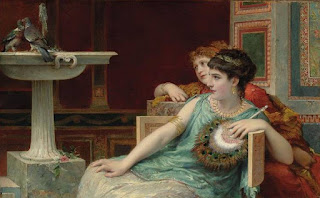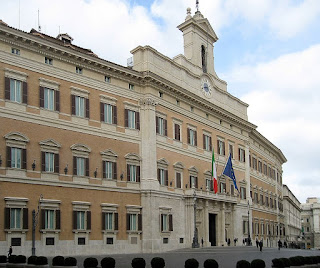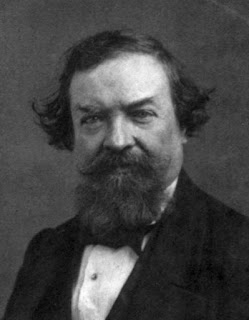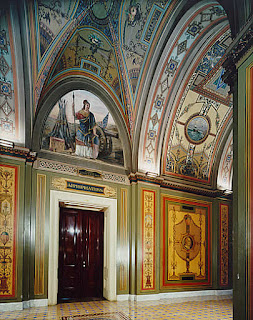Prolific painter recreated scenes from ancient Rome
 |
| Roberto Bompiani: a self-portrait painted in about 1896 |
He became a successful landscape and portrait painter and later in his career he also worked as a sculptor.
His portrait of Queen Margherita of Italy, which was painted in 1878, still hangs in the Palazzo Montecitorio in Rome.
From a wealthy family, Bompiani was able to dedicate himself entirely to the study of art and enrolled at the Accademia di San Luca in Rome when he was 15. He was awarded a share of a first prize in design along with a fellow student in 1836, not long after joining the Academy. Within three years he was regularly winning prizes for sculpture and painting.
As a painter, Bompiani depicted historical, mythological, and religious subjects in an idealised style making his figures physically perfect and giving them noble, spiritual expressions. His paintings of scenes from ancient Rome earned him the nickname of ‘The Italian Bouguereau’, referring to a French painter who made modern interpretations of classical subjects and was working at the same time as Bompiani.
An art historian wrote that despite Bompiani’s conservative approach, he showed himself to be open to new ideas and emancipated himself in his best work almost entirely from what was narrow and conventional in the style that had been imposed upon him by his early training.
 |
| Bompiani's Two Pompeian Ladies, an example of his work depicting scenes from ancient Rome |
In later years, Bompiani painted landscape watercolours and in the 1870s he also began painting portraits. In addition to his painting of the Queen of Italy, he painted a portrait of his own wife and portraits of various members of the Borghese family.
He also painted frescoes for churches and a cemetery in Rome and paintings for a theatre and a church in Santiago in Chile.
Some of his classical works were on display at the Centennial Exhibition in Philadelphia in 1876 and he won an award for his 1872 portrait of his fellow painter Giovanni Battista Canevari, when it was exhibited in Vienna. The painting now hangs in the Academy of San Luca. One of his sculptural works from the 1860s, Sappho, is in the Palazzo Castellani in Rome.
Bompiani served as a professor and ultimately as the president of the Roman Academy of San Luca. He died in Rome in 1908.
One of his sons, Augusto Bompiani, and one of his daughters, Clelia Bompiani, who were both his pupils and both studied at the Academy of San Luca, went on to become professional painters.
The Accademia di San Luca, where Roberto Bompiani and his children studied art, was founded in the 16th century and named after St Luke the Evangelist, the patron saint of painters. It is now located at Piazza Accademia di San Luca close to the Trevi Fountain but was based near the Forum in Rome after it was founded in 1577. The Academy’s original building no longer exists, but the Academy Church of Santi Luca and Martina, which was designed by Pietro da Cortona, still stands overlooking the Forum.
 |
| The Camera dei Deputati has been the permanent seat of the Chamber of Deputies since 1918 |
The Camera dei Deputati - the Chamber of Deputies - one of Italy’s houses of parliament, meets at Palazzo Montecitorio in Rome. The palace was originally designed by Gian Lorenzo Bernini and completed by Carlo Fontana in 1697 and stands to the north of the Pantheon. The building was originally intended for the nephew of Pope Gregory XV. It was chosen as the seat of the Chamber of Deputies in 1871 but the building proved inadequate for their needs and extensive renovations were required before it became the chamber's permanent home, in 1918.
More reading
Gian Lorenzo Bernini - Italy's last universal genius
Pius IX - the longest papal reign in history
Giovanni Boldini - painter who captured elegance of Belle Époque
Also on this day:
1482: The death of sculptor Luca della Robbia
1791: The birth of painter Francesco Hayez
1918: The death of Nobel Prize-winning pacifist Ernesto Teodoro Moneta
1944: The birth of author and politician Raffaele Lauro
1953: The founding of Italian energy giant ENI
1966: The birth of footballer Andrea Silenzi
(Picture credits: Bompiani portrait uploaded by Spino; Accademia San Luca by Warburg; Palazzo Montecitorio by Manfred Heyde; via Wikimedia Commons)
.jpg)




